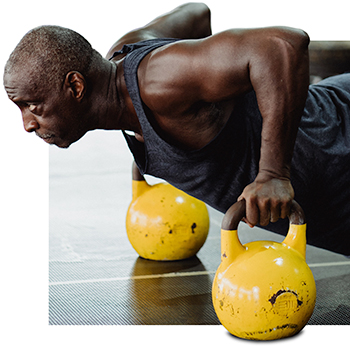
While there are medical instances where TRT is appropriate, it may not be for everyone. Before you buy, consider a side not told to you by the drug companies – a side that all too often ends up on my desk in my “Misfires by Miracle Cures” file.
Let me start with a list of the purported benefits TRT gives us (1).
- Increased libido
- Increased energy
- Increased strength and/or endurance
- Increased height
- Increased mood
- More “lead in your pencil”
- Increased work performance
- Increased bone density
Assuming all of these increases can be attributed to testosterone, my next question is:
At what point does a man need testosterone replacement?
According to new recommendations, millions of men are candidates for TRT. The level at which medical professionals recommend testosterone replacement has been increased to 300ng/dL, which also greatly increases the pool of available consumers (2,3). This has helped testosterone therapy grow into a $2 billion business in the past decade. Basically, if you are 45+, have a desk job and don’t exercise, you are a likely candidate for testosterone therapy.
Wait! Before you look up your local T-Slinger to cure what ails you, consider the risks, benefits, and usage of an exogenous (external) source of testosterone to determine if it’s really right for you.
Testosterone is derived from cholesterol. Introducing exogenous testosterone to a poor diet and inactive lifestyle can cause problems such as stroke, heart attack, or even death. Is it worth the risk?
Just as you would before starting any drug regimen, talk with your doctor to find out if testosterone supplements are the best course of action in your particular situation. When talking to your doctor, keep in mind that many men can alleviate their low-T symptoms with one simple word:
Exercise.
Studies show testosterone increases of up to 44.9% in males after machine weight training (4). The increases we’d see if traditional, non machine-based strength training was measured would be even more drastic. Exercise also improves overall health and lowers the risk of heart attack and stroke, while testosterone supplements increase the risks of cardiovascular disease.
To sum up, let’s look at the known side effects of testosterone supplementation and compare it side by side with exercise (5).
| SIDE EFFECT | TESTOSTERONE SUPPLEMENTATION | EXERCISE |
| Hair loss | Yes | No |
| Redness/swelling of the skin | Yes | No |
| Trouble urinating | Yes | No |
| Change in size/shape of the testicles | Yes | No |
| Testicle pain/tenderness | Yes | No |
| Stomach/abdominal pain | Yes | No |
| Yellowing of eyes/skin | Yes | No |
Now you make the choice. Are the risks of a miracle cure worth ignoring the personal habits that may be the real culprit behind your “Low-T”? Maybe it’s time to start going beyond the marketing hype and learning more about safer ways to keep our bodies healthy. In the meantime, it’s time for me to hit the gym.
References
- http://www.isitlowt.com/
- http://www.nlm.nih.gov/medlineplus/ency/article/003707.htm
- A. Vermeulen, R. Rubens, L. Verdonck (1972) “Testosterone Secretion and Metabolism in Male Senescence”
- Craig BW, Brown R, Everhart J. (1989) “Effects of progressive resistance training on growth hormone and testosterone levels in young and elderly subjects”. Abstract retrieved from PubMed.gov
- http://www.rxlist.com/androgel-side-effects-drug-center.htm Learn more about the dangers of testosterone replacement therapy.
